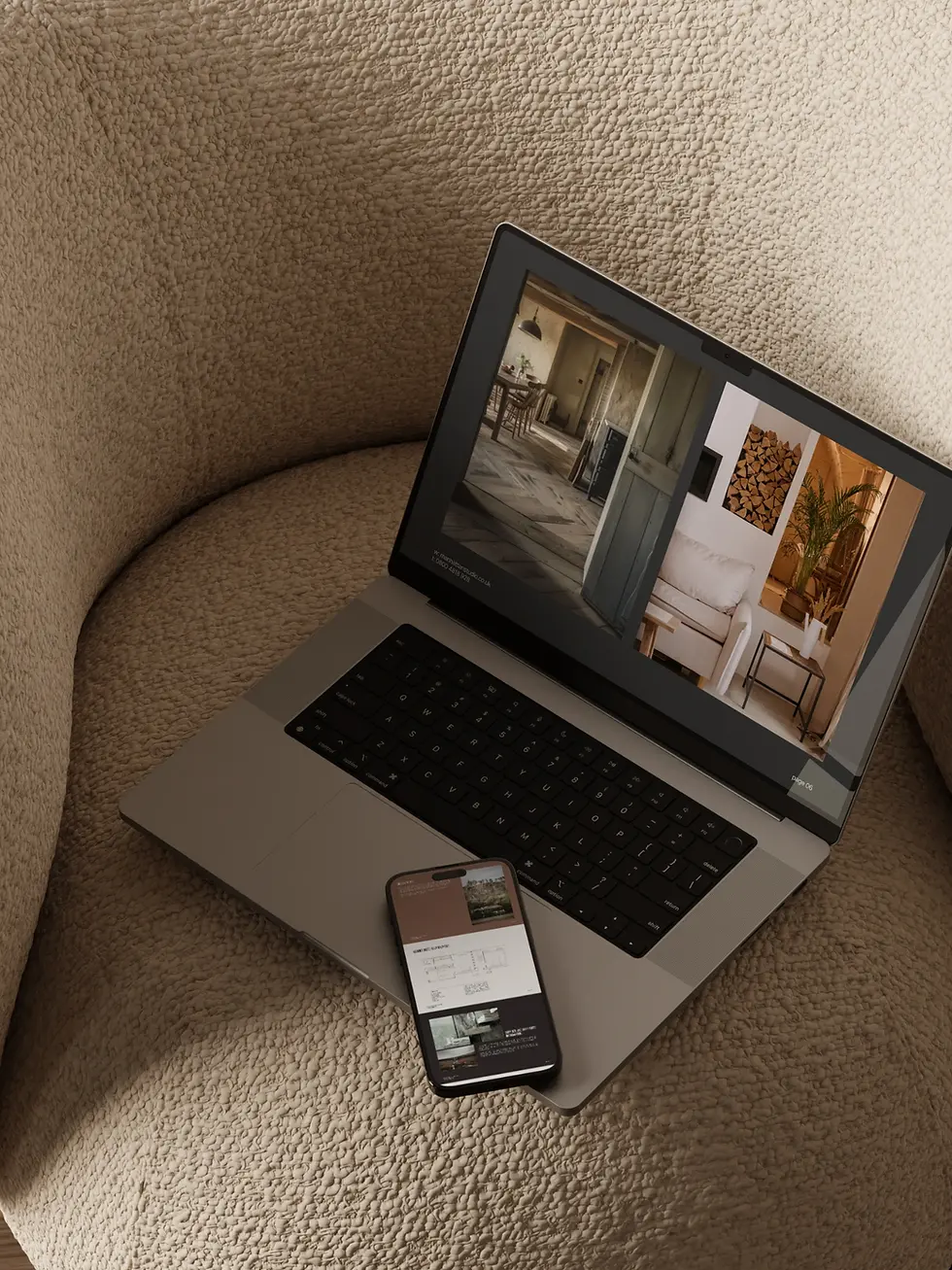Questions I Should Ask My Clients as an Architect
- Architecture Templates .co.uk
- Dec 21, 2024
- 5 min read
Revisions are expensive. They’re a drain on your time—they chip away at your profits, strain client relationships, and can even compromise the quality of your work. Revisions at the wrong time can really undermine your design and process. We all know how painful moving walls is once you've added all your wall details and tags. The knock-on effects on your other drawings and specifications are.... painful.
According to a study by the American Institute of Architects, revisions can add up to 15% more to a project’s timeline. Those are weeks of extra work you didn’t budget for. And it's likely both you and your client will begin to resent each other.
Here is my thought process: most revisions aren’t caused by bad design. They happen because of unclear expectations, missed conversations, or surface-level questions that never get to the heart of what your client truly wants. This is something we were not taught in design school.
It's not about questions an architect should ask a client, you should be asking better ones that don't constitute only a yes / no answer. It starts with listening.
The kind of questions that uncover not just what your client needs, but why they need it. When you master client conversations, everything changes. You build trust. You get better results. You save money. And your clients? They stop seeing you as just another option and start seeing you as their designer.

The Cost of Revisions
Revisions cost you credibility. A few extra tweaks here and there might seem harmless, but they add up quickly. One “minor” change can snowball into weeks of redesigning, renegotiating, re-explaining and undoing the hard work that you've already done. That’s time you could have spent on new projects or, better yet, unwinding after a long day.
What’s worse is how it impacts your relationship with clients. The more revisions you go through, the more clients question your ability to understand their needs. It’s not fair, and it's going to build resentment.
A lot of revisions are completely avoidable. You just need to start the project right—with the right conversations.
When a client says, “We love open spaces,” they’re telling you much more than a design preference. It might mean they value hosting friends or that they feel claustrophobic in tight layouts. If you don’t dig deeper, you risk creating a design that misses the mark—and that’s where revisions start piling up.
You just need to start the project right—with the right conversations. Our Client Process Bundles for Architects & Interior Designers can help you streamline these initial conversations and filter bad-fitting clients before wasting your limited time.
When a client says, “We love open spaces,” they’re telling you much more than a design preference. It might mean they value hosting friends or that they feel claustrophobic in tight layouts. If you don’t dig deeper, you risk creating a design that misses the mark—and that’s where revisions start piling up.

Common Client Questions and How to Respond.
Here’s a breakdown of common things clients say, what they might really mean, and how you can guide the conversation to the heart of the matter.
“We want a modern design.”
What They Might Mean:
“We saw something sleek and stylish in a magazine.”
“We want a design that feels fresh and timeless, not trendy.”
“We don’t like clutter and prefer simplicity.”
How to Respond:
Open-ended question: “When you say modern, what comes to mind? Is it about clean lines, materials, or how the space makes you feel?”
Follow-up: “Can you describe a space you’ve been in that felt modern to you? What stood out?”
“We’re working with a tight budget.”
What They Might Mean:
“We’re worried about unexpected costs.”
“We’re not sure how much things actually cost.”
“We’re willing to spend, but we need reassurance it’s worth it.”
How to Respond:
Open-ended question: “What’s your comfort zone for spending on this project? Are there areas where you’d be open to investing more if it added value?”
Reassure with transparency: “We can design with your budget in mind and discuss options for where to save and where to splurge.”
Want to know more about how architects should charge for their services? Read our guide on pricing strategies for architects.
“We want a space that feels bigger.”
What They Might Mean:
“Our current space feels cramped and overwhelming.”
“We want a layout that’s more functional and open.”
“We want natural light to make the space feel expansive.”
How to Respond:
Open-ended question: “What about your current space feels small? Is it the layout, the lighting, or something else?”
Follow-up: “Are there any specific spaces you’ve seen that felt ‘big’ to you? What made them work?”
“We love entertaining.”
What They Might Mean:
“We want a space where we can host comfortably.”
“We value connection and want a home that reflects that.”
“We don’t want entertaining to feel like a chore.”
How to Respond:
Open-ended question: “What kind of entertaining do you usually do? Large parties, intimate dinners, or something else?”
Follow-up: “When you’re hosting, what’s important to you—flow between spaces, seating, or something else?”
“We’re worried about timelines.”
What They Might Mean:
“We’ve had bad experiences with delays before.”
“We’re anxious about how long this will disrupt our lives.”
“We don’t fully trust the process yet.”
How to Respond:
Open-ended question: “What kind of timeline are you imagining? Are there specific deadlines that are critical for you?”
Follow-up: “What concerns do you have about timelines? Let’s work through them together.”

Why Open-Ended Questions Matter
What makes open-ended questions so powerful? They do more than get surface answers by getting the client to reveal the stories behind them.
When a client feels heard, they’ll naturally share more. And the more they share, the better you understand not just what they want, but why. This reduced revisions.
Some tips for getting to the heart of the matter:
Ask “why” tactfully. Instead of “Why do you want that?” try “What about that appeals to you?”
Encourage storytelling. “Can you tell me about a space you’ve been in that made you feel comfortable?”
Reframe their ideas. When clients ask for something specific, ask them about the outcome: “What do you hope this feature will bring to your day-to-day life?”
Why Listening Makes You More Competitive
Clients don’t want to hire someone who just designs, they want someone who is likely to collaborate with them in the way that they feel comfortable. A connection needs to be built to last years, it's a long process.
Here’s what happens when you truly connect with your clients:
You reduce revisions. When clients feel their ideas are heard, they’re less likely to second-guess.
You avoid competing on price. A client who feels understood will choose you for your approach, not because you’re the cheapest option.
You build trust and loyalty. When clients trust you, they’ll recommend you—and that’s the best marketing you can get.
Learn how to turn satisfied clients into loyal advocates with our Client Referral Section in our 40-page client guide for architects & interior designers.

Conclusion: Build Better Relationships & Save Time
Your clients are saying more than you realise—it’s your job to listen, interpret, and guide them toward a design they’ll love. By asking thoughtful, open-ended questions and reframing their ideas, you can translate vague desires into clear visions.
When you master this process, you don’t just save time or avoid revisions. You become the designer clients trust, value, and recommend—an expert they’ll turn to for years to come.
Ready to elevate your client conversations and streamline your process? Download our free 40-page Client Guide now and take the first step toward starting projects properly.
Tim, Architecture Templates




